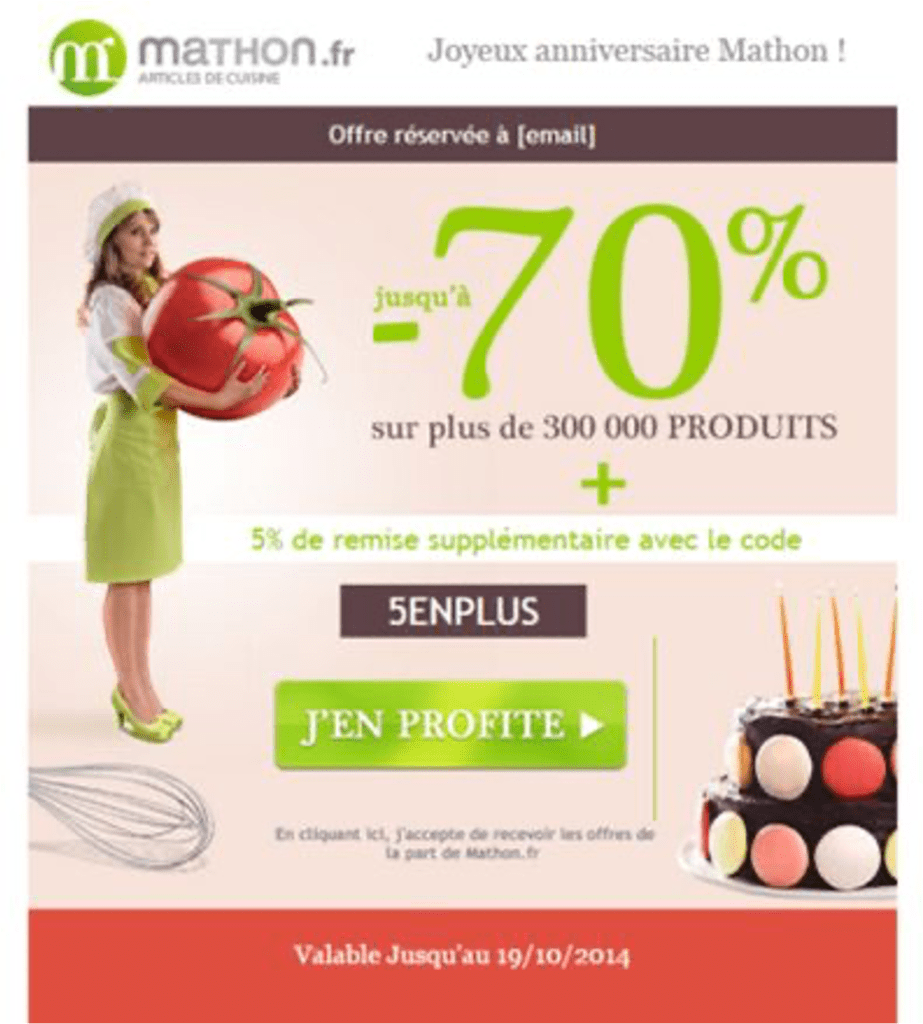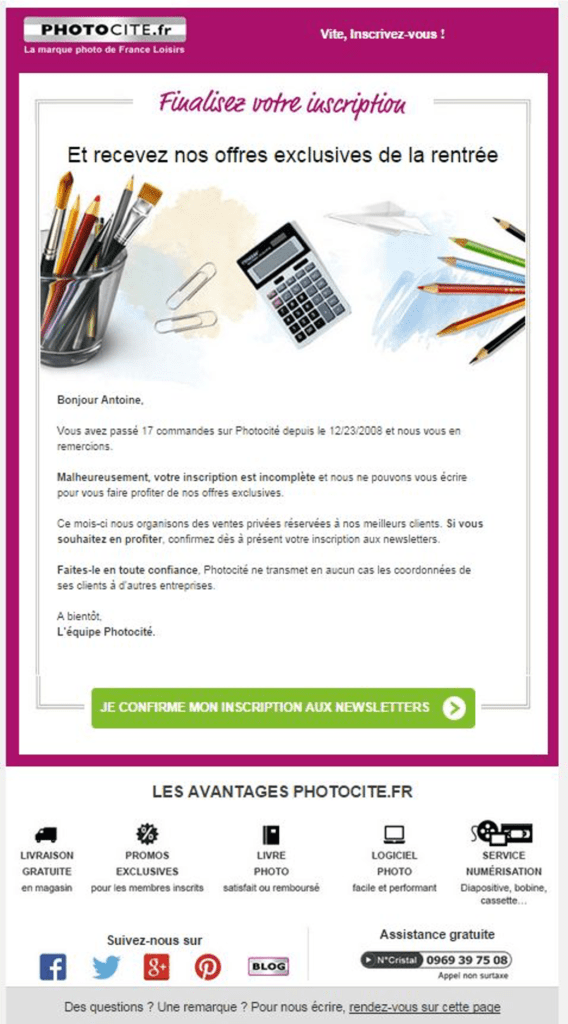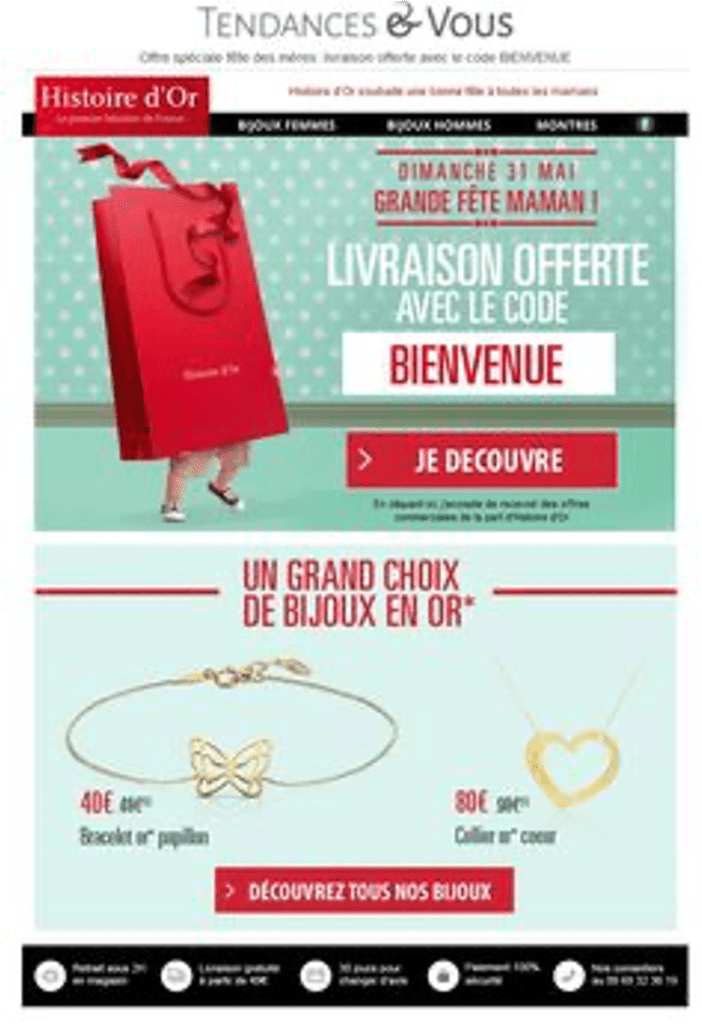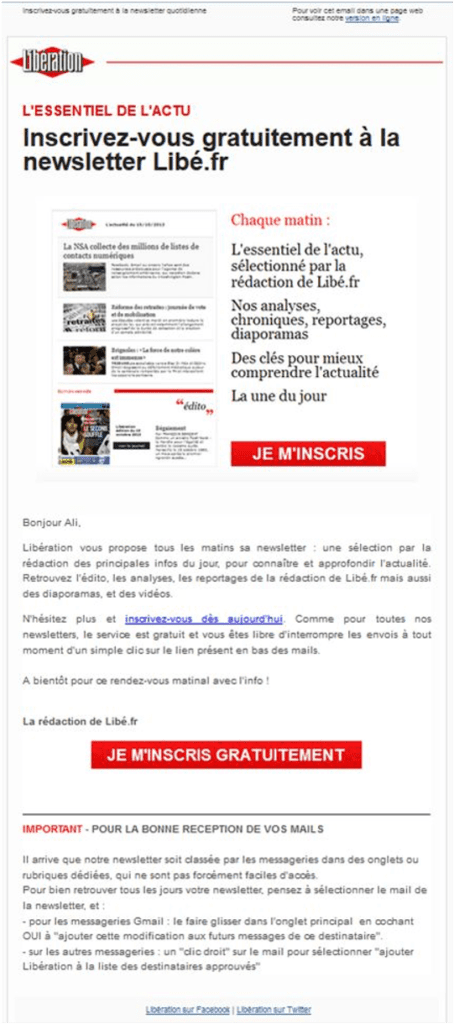Given the number of participants and the number of questions asked, I think this topic needs some clarification 😉
For those who missed the live, here is the replay:
With Melanie (whom I'd like to thank again for his invaluable help), we also wanted you to benefit from the answers we've provided to the many questions asked.
But before we get into the questions, let's set the scene a bit.
In general, consent (opt-in) is not required if you send service emails. By service email, mean any email related to the execution of a contract. So order confirmation email, information email related to the follow-up of the order. Even the email requesting advice following a purchase can be considered as a service email.
In BtoC, consent is mandatory to be able to send promotional emails and editorial newsletters to a prospect base. But consent is not required from customers if and only if :
- they have purchased a product or service. Be careful, those who have only opened an account on your site without making a purchase are considered as prospects. And prospects are subject to mandatory opt-in.
- the mark promotes "similar or analogous" products" . (We come back to these terms in the questions below).
- they were informed, at the time of collection, that their email address will be used for promotional emails/newsletters with the possibility to object.
So, how do you properly inform the written collection?
Melanie tells us that she often sees 2 types of collections.
- Either the brand clearly asks for consent. On the visual below, when creating an account, the brand clearly asks the question about consent. Do you want to receive offers and good deals or not? The answer to this question is mandatory, so we can not do without. But other advertisers do not make this field mandatory. In this case, if the contacts do not answer, we can still send them promotional emails if and only if they have made a purchase.

2. Either the brand proposes a checkbox to express the disagreement to receive emails and newsletters. In the visual below, Fnac is on the opt-out principle. By default, it will communicate with customers who have not checked this box.

How to properly inform during the oral collection?
When collecting data by telephone (telemarketing, call-center...), the telephone advisor must perform an oral reading information of the type " I collect your email address to send you emails about your purchase and also to send you great promotions... and I inform you that you have the possibility to refuse to receive newsletters" .
During the collection at the point of sale, the salesperson must also inform you that your email will be used to receive future promotions. In addition, there should be a sign next to the cash register that explains the main rules that the company is committed to respect when handling personal data.
In fact, it is a question of evidence
When the CNIL makes an inspection, it will check if all these compulsory information mentions have been respected. You must be able to prove that you have never had any opposition from your customers. For written collection, it's fairly easy to document. For oral collection, you will have to keep the script that was spoken by the telephonist.
Maintenance - time for questions!
Does a strictly editorial newsletter that does not refer to the product or service require an opt-in?
An editorial newsletter has still the purpose to promote the sender's image. So newsletters, even 100% editorial ones, are considered as promotional emails. So yes, the opt-in is necessary for prospects. But, not for customers who did not object.
Is the unsubscribe confirmation email a service email?
Yes, it can be part of a service email...So legally speaking, we could send one...But is it really a good idea to send an email after someone has asked not to receive it anymore?
Is the cart abandonment email considered a service email? If so, is the cart abandonment email considered a service email?
The cart abandonment email is not considered a service email. A service email is related to the execution of a contract. In the case of a cart abandonment, there is no contract between the brand and the customers. So for a prospect, you will have to obtain their opt-in to send them a cart abandonment email. And always the same, for the customers who did not object, the brand will be able to send the cart abandonment email.
For how many months are we allowed to communicate with these opt-out customers?
The only time limit to be respected is that of the conservation of the data fixed at 3 years by the CNIL. Beyond the 3 years after the last contact, you must not communicate with anyone. By "last contact", we mean last purchase or last click. The CNIL does not take into account the last opening of an email.
Some advertisers require that they communicate with their non-opt-in customers who purchased a product/service less than 12 months ago. Be aware that there is nothing, legally speaking, that prevents you from expanding your targeting.
Isn't the practice of "not checking = consenting" prohibited by the CNIL?
No, it is not prohibited. The company relies here on the exception to consent: it can therefore only send an email to people who have made a purchase, and to offer them "similar" products. Moreover, the data collection form must include the mandatory information (indicating in particular that the email address will be used for prospecting purposes) and a checkbox allowing the person to object to receiving these messages.
In the case of "not checking = consent", can we speak of explicit consent?
No. This is an "opt-out". An explicit consent ("opt-in") is an "explicit" expression of will, such as a checkbox.
Need help?
Reading content isn't everything. The best way is to talk to us.
What about loyalty programs? (sending emails with a loyalty check). Is there a need for a loyalty opt-in?
Yes, membership in a loyalty program cannot be analyzed as a service that would allow to rely on an opt-out. The explicit consent to receive emails in the framework of the loyalty program must be obtained.
What exactly falls within the spectrum of communications about similar products and services?
Everyone is asking this question. There has been no case law on this subject specifically. Basically, it's not too much of a headache at this level. Melanie takes the example of a person who bought a book from an e-tailer. If this e-retailer also sells DVDs, CDs... he can promote these items as well. In fact, Melanie explains that you have to look at it from the customer's point of view and ask yourself "is it reasonable to expect to receive this type of product information? But frankly, no need to worry, the CNIL will mainly look at whether you are addressing contacts who have made a purchase and who are not opposed to it.
Can I ask a customer to subscribe to my newsletter via a service email?
Yes, it seems possible to encourage your customers to opt-out of your newsletter in a service email (be careful if and only if the main subject of the email remains related to the service and not to the newsletter subscriptionIt is a good strategy to try to get explicit consent.) It is a good strategy to try to collect explicit consent.
On the other hand, if they don't sign up, you can, legally speaking, continue to send them promotional emails as long as they don't object. But does it make sense?
How to trace the consent taken by a physical merchant on his stand (on a market)? Is it necessary to keep an updated Excel file?
Yes, consent and process must be tracked, if only to prove the retention period. No comments on Excel ;-), you need a secure tool.
Is the email, informing the customer that his data will be deleted (after 3 years of inactivity) with an incentive to return to the site, considered as a service or prospecting email?
So legally speaking, just before the 3 years of inactivity, we could send him an email if the client never objected... but from a customer experience point of view, we don't really believe in it 😉
Is the visit to the app or website (without purchase) a touch point to calculate the 3 years?
Um... no. The CNIL traditionally considers that data relating to customers or prospects can be kept for a maximum of 3 years from the last contact from them (this period must however be adapted according to the context and the purposes). This "last contact" must be considered as a clear act demonstrating the person's interest in the products or services of the company invoking it, such as a click on a hyperlink contained in an email (the mere opening of an email cannot be considered as a contact as it may be involuntary). Under these conditions, it seems difficult to consider a simple visit to the website or app, without a purchase, as a last contact allowing to keep the data of a person.
On an order confirmation email, can I have a box that prompts me to subscribe to the newsletter?
Same answer as above. Yes, legally speaking it is possible. On the other hand, you have to think about the customer experience. What do we do if the customer doesn't click on the "sign up for the newsletter" button? Do we send it anyway?
Is there a maximum delay between the time of purchase and the communication of similar products?
No, you have 3 years max from the last contact 😉
In the context of a "free" media account (which does not sell anything), can the consumption of a content (reading an article, listening to a sound, ...) be considered as a "purchase"?
Basically, to send messages to the person who has created an online account, his explicit consent is required even if the person uses his account while listening to music or reading articles...
The latest sanctions
Cdiscount because they sent newsletters to people who had simply opened an account on their site without making a purchase.
Nestor : this is a workplace meal delivery company. They sent newsletters to those who had just created an account without purchasing. Even invoking, the BtoB exception, the CNIL ruled that the link was not sufficient.
Most CNIL controls come from customer complaints that have been addressed to Signal Spam or directly to the CNIL. These customers often complain about an unsubscribe system that does not work.
To conclude?
In fact, if you have customers who never objected to receiving your communications AND you are within the 3-year time limit, you can legally send editorial newsletters and promotional emails without too much headache.
But there is also the company's policy. Some companies choose to communicate only if there is explicit consent. Opt-out customers are systematically discarded.
In fact, it is important to think about the customer experience.
Some marketing tips 🙂
- If your company's policy is to be on the opt-in principle :
- Try to opt-in your base at the time of collectionvia the order confirmation email. Be careful with the subject and the main title of the email which must remain linked to the order confirmation and not to the newsletter subscription.
- Then send a reception scenario as soon as consent is collected. Explain to them via 2-3 emails why you are addressing them, who you are, what they will receive... Offer to set the frequency of sending newsletters and the type of content (preference center : i ?? you)
- Keep well in base the collection source and make sure to monitor your stats on this particular target.
- If until now you did not communicate with your non-opt-in customers and now you want to send them your newsletters/promotional emails :
- Start with a hosting scenario and highlight the possibility to unsubscribe of your emails (as a button and not just an underlined link in 10px grey font on a grey background ;-))
- More of this welcome scenario, you can then send them your editorial newsletters at first, then your promotional emails.
- The idea of all this is to avoid aggressiveness in terms of content and sending pressure.
- And most importantly, keep the source of the collection in base. Monitor your statistical performance on this target. If your dissatisfaction rate exceeds 40/50%, stop sending. If your engagement rates (open and click rates) are low, lower the commercial pressure on this target.
- If you are already communicating to your non-opt-in customers:
- Make sure to check your statistical performance (and your deliverability) on this target.
- If your dissatisfaction rate is below 20% and if your open and click rates are good (i.e. in the average of your global performances), you can even allow yourself to accelerate the sending rate on this target while monitoring the results as you go along.
- If your rates are bad, start to stop sending promotional emails and start using 100% editorial newsletters instead. When your rates go back up, we can start to send promotional emails, including a little editorial to reduce the feeling of too aggressive emails.
- And make sure you have a working unsubscribe system with 1 click 😉
Some examples of opt-in email creatives found on the net




Suggest topics!
This live is born under the impulse of one of our readers of our blog. So don't hesitate! If you have any questions on a subject, send us a message and we'll be happy to dissect the subject in a future live 🙂
And if you want to be coached on this subject (or any other subject for that matter), don't hesitate to send us a little message 🙂
Leave a Reply